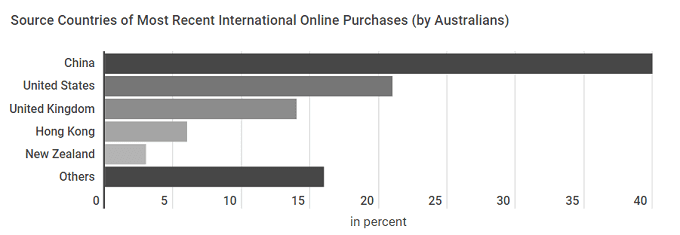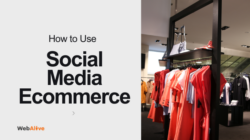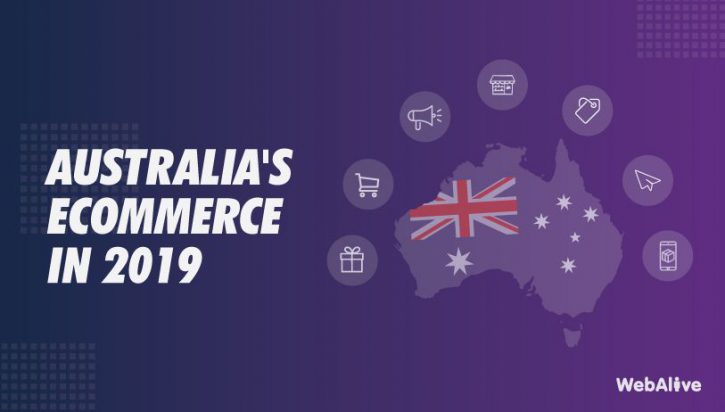
The State of Australia’s Ecommerce in 2019
Ecommerce is booming worldwide and, in Australia, there’s no exception. Last year, we Australians spent a total of A$28.6 billion (US$20.3 billion) on online shopping. As of January 2019, online shopping is responsible for 9% of Australia’s total retail sale.
Statista predicts that by the end of this year Australian online businesses will see a 15.1% growth in revenue. Also, the number of online shoppers will reach 20.3 million in 2019, which is 5% more than last year.
Seeking the most recent information on the Australian Ecommerce market? Look no further than our latest article: 16 Key Ecommerce Statistics and Insights in Australia 2023
Here are some essential Australian ecommerce statistics that you should know.
How fast is ecommerce growing in Australia?
1. Australian Ecommerce market value will be A$35.2 billion by 2021.
Australia is currently the 10th largest ecommerce market in the world by revenue. Ecommerce in Australia will continue to grow over the upcoming years. The market size will be about A$35.2 billion (US$ 25.2 billion) by 2021.
(Source: Statista)
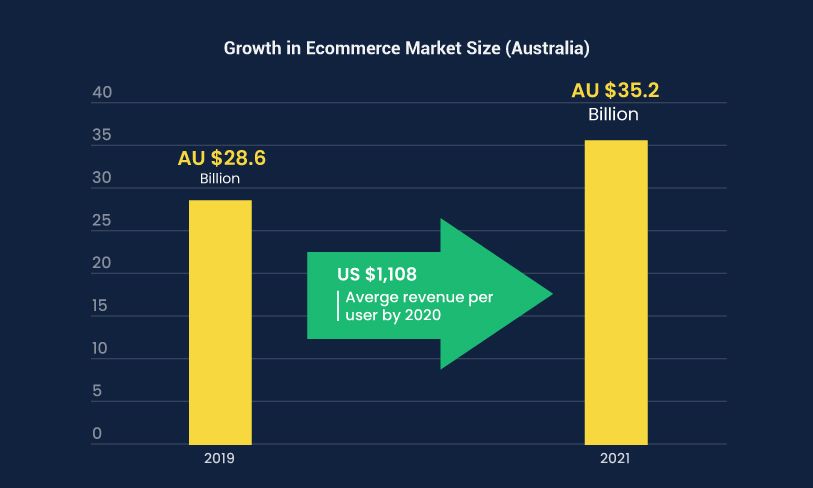
2. Eight out of ten Australians shop online. By 2020, every one out of ten items will be bought online.
As of February 2019, 80.8% of people in Australia are shopping online and very soon one out of every ten items will be purchased off ecommerce stores. By 2021, the ecommerce market penetration rate will reach 85.2%, and the number of people buying online will be 22.0 million.
(Source: Statista, Australia Post)
3. Australia’s ecommerce industry is expected to have a 15.1% revenue growth in 2019.
However, statistical analysis shows that this rate will start to slow down in future and by 2021 the revenue growth rate will be down to 7.4%.
(Source: Statista)
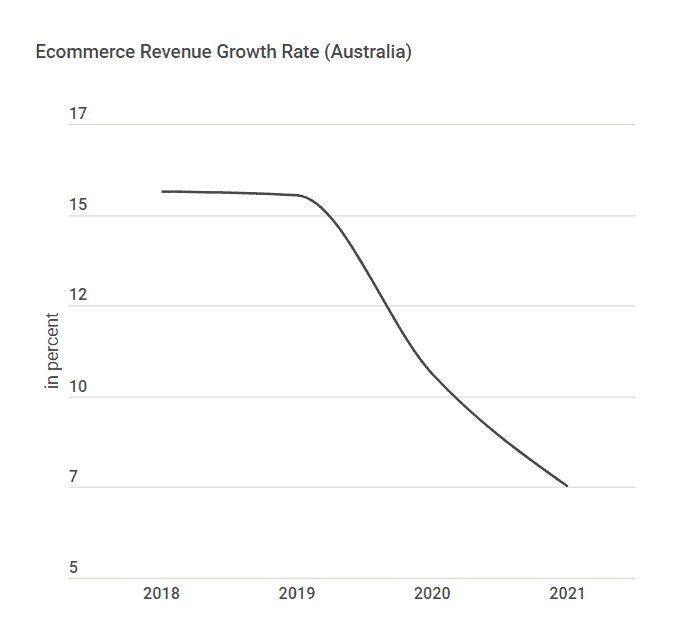
As the number of online shops grows, so does the competition. Not only will online retailers face up against huge home-grown contenders and international players like Amazon, but they’ll also be competing to meet the increasing customer demands.
So although we’ll see a growth in online shoppers, the rising business operation costs will keep the revenue growth in check.
The ecommerce industry will continue to grow beyond 2019 but will also come with a more competitive landscape. Online businesses will need to start investing in improved services and brand values to retain existing customers. More prominent Australian brands should also think about expanding into international markets to sustain their growth rate.
Australian online shopping trends
4. Department and variety stores are the fastest growing ecommerce segment in Australia.
Online department and variety stores saw a 29.6% growth in 2018, and this trend is likely to continue in 2019. The graph below shows year on year growth rate for different market segments based on ecommerce statistics from the last two years –
(Source: National Australia Bank)
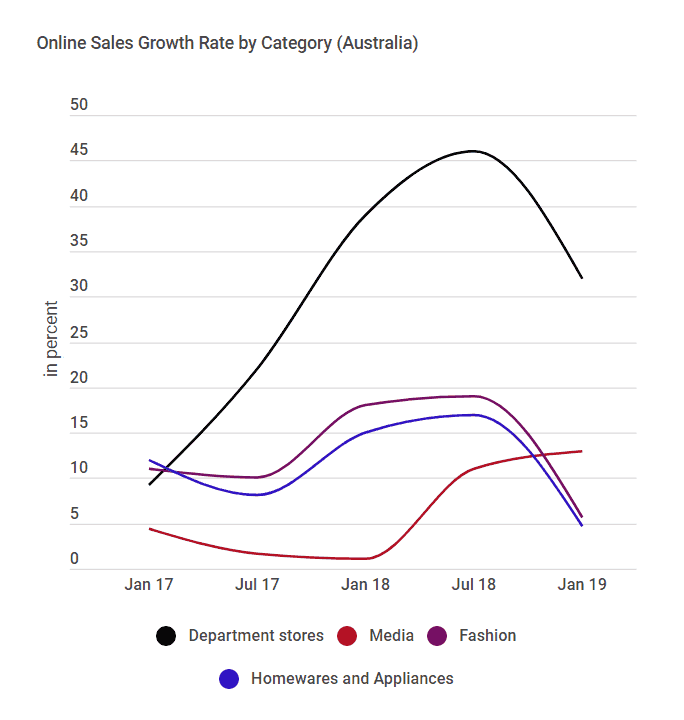
Fashion has been one of the strongest ecommerce segments in Australia, but according to the recent online shopping statistics, it’s showing the signs of slowing down. As competition in the online Fashion industry grows, more than 30% beauty and fashion shoppers make purchases only if there are promotions or special offers. (Source: Australia Post)
5. Third-party mobile and online payments are gaining popularity.
Currently, 47% of online shoppers in Australia use credit cards to buy products online. 29% of Australians use services like PayPal. While these are the current standings, third-party payment systems or E-wallets like PayPal, Alipay, or Amazon Payments are seeing a rise in the future. By 2023 about 37% of online payments will be processed via e-wallets.
(Source: Statista)
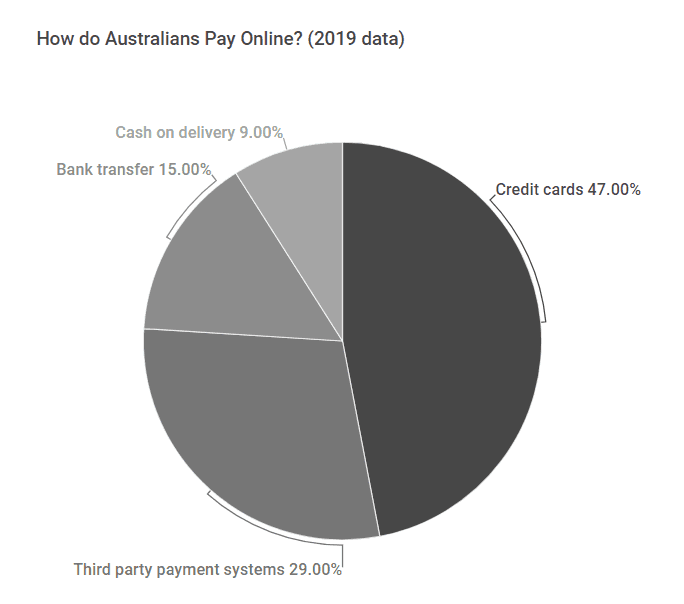
Note: The buy now, pay later (BNPL) model is also becoming very popular among Australian consumers. Last year, 6.7% of online goods were purchased through buy now pay later channels.
(Source: Australia Post)
Your online store should not only accept credit cards but also have third-party payment systems like PayPal and AfterPay. While cash on delivery can be omitted, a steady number of people will continue to prefer bank transfers for online payments.
6. Australian online shoppers receive 2.3 parcels per year.
People are spending more on time shopping online, and are also buying more frequently. Australian shoppers who were over 18 received an average of 1.9 parcels in 2017. In 2018, the average number of parcel received increased by 21% and reached 2.3. This number is most likely to grow even more by the end of 2019.
Australian consumers are becoming more environmentally conscious. 60% online shoppers want parcels to have sustainable packaging.
(Source: Australia Post)
7. Australians are fast adopting international shopping traditions.
Last year’s Black Friday and Cyber Monday sales saw a 28% growth in online shopping. It’s now become the biggest online shopping week of the year. End of financial year sales also grew by 30% in 2018. These numbers show that Australians use these sales to save and enjoy online bargain hunting.
People have even started to purchase seasonal items online, rather than in stores. Last December saw a 41% increase in the online purchase of food and liquor compared to 2017.
(Source: Australia Post)
Discounts and promotional offers are becoming the keystones in driving sales. Employing an effective discount strategy and loyalty system will increase customer satisfaction. Reports also show that customers start shopping earlier for Christmas, so moving your Christmas sales period ahead will increase profit.
8. 25% of online sales in Australia were made through mobile devices.
According to the latest PayPal m-Commerce Index, one in four shoppers in Australia will purchase items from their mobile phones. Though 63% of Australians still prefer desktops or laptops, online shopping using mobiles is gaining more and more popularity. 48% of people shop via mobile at least once a week.
(Source: PayPal)
Making sure that your ecommerce site is mobile responsive is crucial. Your product pages and checkout process must be fully optimised for mobile users.
9. 65.5% online orders placed by Australians come with free shipping.
Shipping costs seem to be the deal breaker for most Australians. 65.5% of total orders delivered last year had free shipping. In fact, 60% Australians will abandon a shopping cart if the shipping cost is higher than expected.
Global ecommerce trends
10. The global ecommerce market size will reach A$3.5 trillion (US$2.5 trillion) in revenue by 2021.
The 2019 global ecommerce market size is A$2.8 trillion (US$2.0 trillion), 11.3% larger than 2018. By 2021, the market will grow by 25%.
Here are the top 10 countries based on ecommerce market size in 2019:
- China
- USA
- UK
- Japan
- Germany
- South Korea
- France
- India
- Canada
- Australia
(Source: Statista)
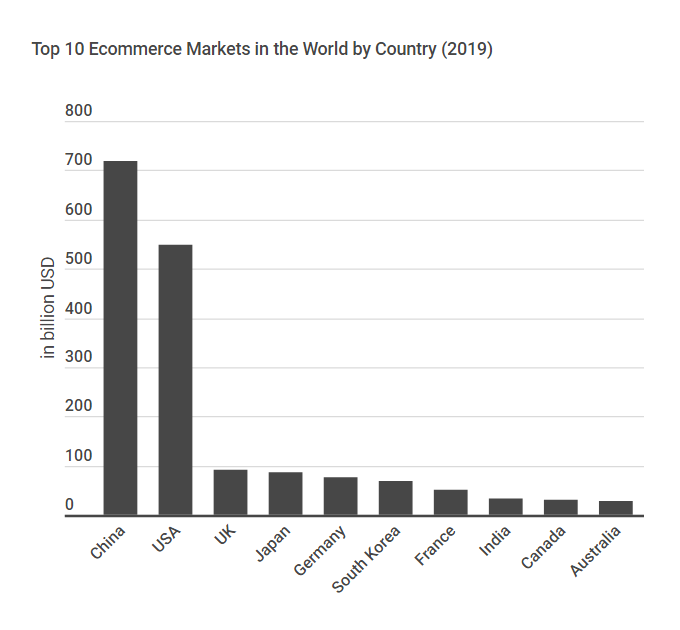
11. 57% online shoppers make purchases from overseas retailers.
There’s a significant potential for growth when it comes to ecommerce businesses who are looking to expand beyond borders. Big Australian businesses should especially look for more opportunities in international expansion as the growth rate of ecommerce user number in Australia is reaching its saturation point.
(Source: Shopify)
Going global doesn’t mean you have to set international warehouses at the onset. Social media campaigns or online advertising can be an excellent way to test your viability in a new market.
12. 40% of Australian shoppers’ most recent purchases were from China
China is the most popular global ecommerce destination for Australians, followed by the United States and the United Kingdom. 21% online shoppers have made their most recent online purchase from the US and 14% from the UK.
(Source: Australia Post)
Top 10 Ecommerce websites of Australia in 2019
What is the best online shopping site in Australia?
In February 2019, Power Retail published a list of online retailers Aussies love the most. These sites were chosen based on traffic, user experience, and customer satisfaction ratings. Here are the top ten online stores from that list –
- Woolworths
- Coles
- Catch
- ASOS
- The Iconic
- GraysOnline
- Kmart
- JB Hi-Fi
- Myer
- Target
Interestingly, Amazon Australia ranks at number 15 on the list. Though early forecasters warned that Amazon might disrupt the Australian ecommerce industry, a 2019 study shows that only 6% of Australians shop regularly from Amazon Australia and only 31% visitors buy from the site.
(Source: Power Retail)
Despite having a smaller population than many growing markets, Australia continues to be an ecommerce powerhouse within the global stage. Local online retailers have been holding their own against international marketplaces, and any online businesses who can promise excellent customer service are going to come out on top in this A$28.6 billion industry. All in all, the future looks bright for Australian ecommerce.
References
1. Statista Digital Market Outlook
2. National Australia Bank Retail Sales Index January 2019
3. National Australia Bank Retail Sales Index December 2018
4. Australia Post 2019 Ecommerce Industry Report Preview
5. Australia Post Inside Australian Online Shopping 2019
6. Australia Post Inside Australian Online Shopping 2018
7. Australia Post Ecommerce Market Update 2018
8. PayPal M-Commerce Index
9. eMarketer Retail Ecommerce Performance Benchmarks, Australia
10. SAP Consumer Propensity Report Australia
11. The Global Ecommerce Playbook (Shopify)
12. The 2019 E-Commerce Leaders’ Playbook by Power Retail
You read a lot. We like that
Want to take your online business to the next level? Get the tips and insights that matter.
